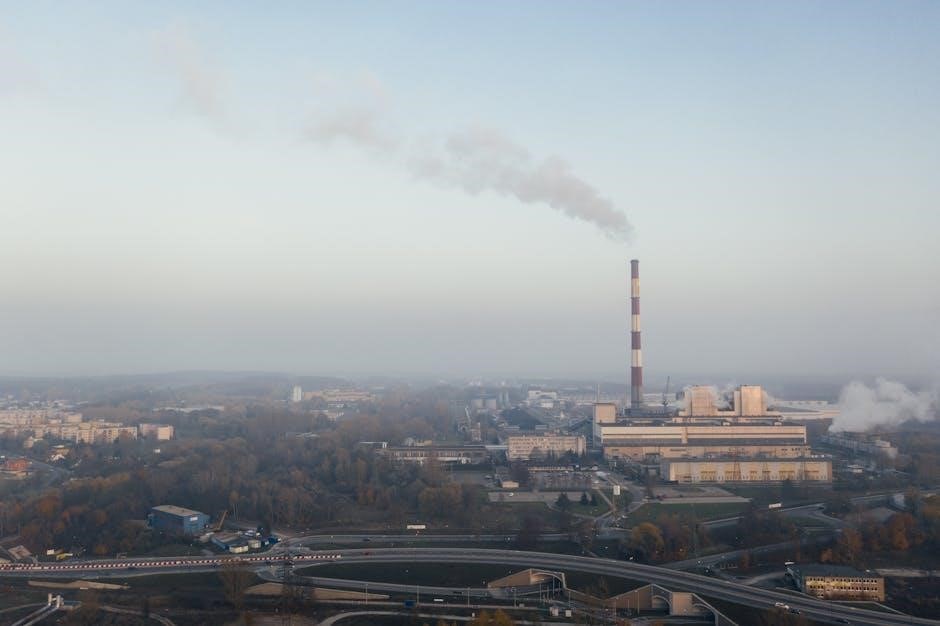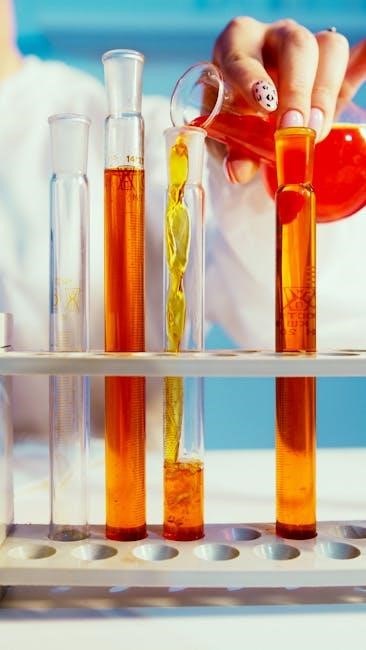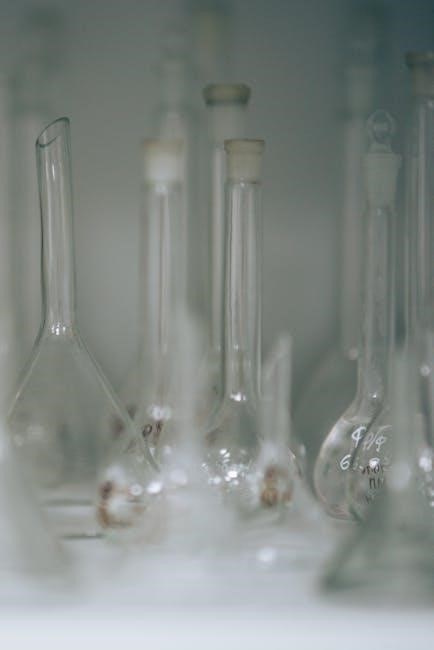physical and chemical changes worksheet answers pdf
Learning about physical and chemical changes involves understanding matter transformations, using
- ordered lists
to identify key concepts and links to relevant resources online easily.
Definition of Physical and Chemical Changes
A physical change is a transformation in which a substance changes its state or properties, but remains the same chemically, using
- unordered lists
to outline examples.
A chemical change, on the other hand, is a process in which a substance is transformed into a new substance with different properties, often involving chemical reactions and resulting in a new compound.
This fundamental distinction is crucial in understanding the behavior of matter and
- ordered lists
can help to identify key characteristics of each type of change, making it easier to navigate complex concepts and apply them to real-world scenarios, with the help of online resources and diagrams to illustrate the differences.
By grasping these definitions, students can better comprehend the underlying principles of physical and chemical changes, and develop a deeper understanding of the subject matter, using
to organize and compare information.
Examples of Physical Changes
Melting ice and evaporation are examples of physical changes, involving state transformations easily.
Examples of Physical Changes in Everyday Life
Physical changes occur frequently in daily life, such as when water freezes or evaporates, and when objects change shape or size.
For instance, folding clothes or breaking a glass are physical changes because they involve a change in the physical state or shape of the object, but the chemical composition remains the same.
Additionally, melting ice cubes or watching a snowflake form are examples of physical changes that can be observed in everyday life, and these changes can be reversed, meaning the original state can be restored.
These examples illustrate how physical changes are a natural part of our daily experiences and can be easily identified by their reversible nature and lack of change in chemical composition.
Using
- ordered lists
and
- unordered lists
can help to organize and understand these concepts more clearly.

Examples of Chemical Changes
Chemical changes occur when substances transform using reactions and forming new compounds with different properties easily online.
Examples of Chemical Changes in Everyday Life
Chemical changes are common in everyday life, involving processes like cooking and cleaning. These changes can be observed in various activities, such as baking a cake, where ingredients undergo a transformation to form a new substance. The formation of rust on iron is another example of a chemical change, where the iron reacts with oxygen to form a new compound. Additionally, the combustion of gasoline in a car engine is a chemical change that releases energy. These examples illustrate how chemical changes are an integral part of our daily lives, and understanding them is essential for various applications. By recognizing these changes, we can better appreciate the world around us and make informed decisions about the products we use and the activities we engage in, using
- ordered lists
to organize information.

Key Characteristics of Physical and Chemical Changes
Identifying changes involves analyzing the < framebuffer> and properties of substances to determine their type easily online always.
Distinguishing Between Physical and Chemical Changes
To distinguish between physical and chemical changes, it is essential to analyze the properties of the substances involved, using
- ordered lists
and
- unordered lists
to identify key characteristics.
The process involves examining the chemical composition and physical properties of the substances, such as color, odor, and texture, to determine if a change is physical or chemical.
By understanding the differences between physical and chemical changes, individuals can better comprehend the natural world and make informed decisions about various phenomena, including those related to science and technology.
This knowledge can be applied in various fields, including chemistry and physics, to advance our understanding of the world and develop new technologies and innovations, using and
to organize and present data.
By recognizing the distinct characteristics of physical and chemical changes, we can gain a deeper appreciation for the complex processes that shape our world, and develop new methods and techniques for analyzing and understanding these changes.

Worksheet on Physical and Chemical Changes
Using online resources and to complete worksheets easily.
Identifying Physical and Chemical Changes
Identifying physical and chemical changes requires understanding the properties of matter and how they transform. Using online resources and can help complete worksheets easily. The process involves analyzing the characteristics of the change, such as the formation of a new substance or a change in state. A
- ordered list
can be used to categorize the changes, with physical changes involving a change in state or properties, and chemical changes involving the formation of a new substance. By using
and
to organize the information, it becomes easier to identify and distinguish between physical and chemical changes, and to understand the underlying principles and concepts. This skill is essential for completing worksheets and answering questions on the topic of physical and chemical changes.

Answer Key for Physical and Chemical Changes Worksheet
Answers are provided in a pdf format for easy reference and grading purposes online always.
Answers to Common Questions on Physical and Chemical Changes
Many students have questions about physical and chemical changes, and the answers can be found in a variety of online resources, including websites and
- ordered lists
. Some common questions include what is the difference between a physical and chemical change, and how can you identify each type of change. The answers to these questions can be found in a pdf document that provides a comprehensive overview of the topic. Additionally, many
- unordered lists
are available that provide examples of physical and chemical changes, making it easier to understand the concepts. By using these resources, students can gain a better understanding of physical and chemical changes and be able to answer common questions about the topic. This information is readily available online and can be accessed easily.
Physical and chemical changes are explained using links and
- lists
to summarize key concepts easily online.
To summarize, physical and chemical changes are fundamental concepts in chemistry, explained using various resources and
- ordered lists
online.
The key is understanding the differences between these changes, which can be achieved by analyzing
- unordered lists
of examples and characteristics.
By studying physical and chemical changes, individuals can gain a deeper understanding of the world around them, from images of natural processes to
of chemical reactions.
This knowledge can be applied in various fields, including science, technology, and engineering, using links to relevant information and
- lists
of key concepts.
Overall, physical and chemical changes are essential concepts that can help individuals understand the world and make informed decisions, using
- unordered lists
and
to organize information.
